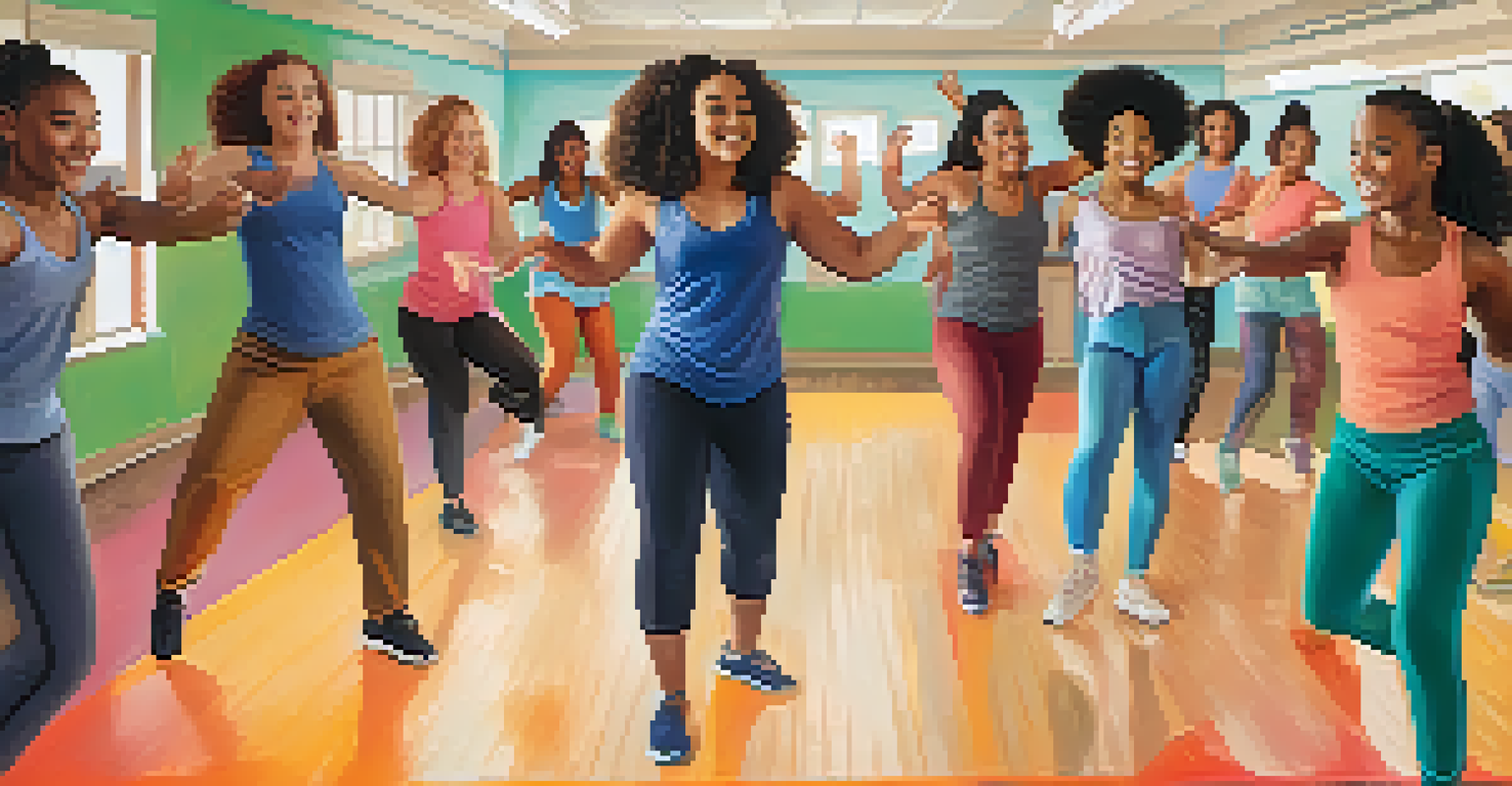Dance and Loneliness: A Journey Towards Emotional Healing

Understanding Loneliness and Its Impact on Well-Being
Loneliness is a complex emotion that many people experience at different stages in life. It can stem from various factors, such as moving to a new city, losing a loved one, or even feeling disconnected in a crowd. This feeling can lead to a range of mental health issues, including anxiety and depression, making it crucial to find effective ways to cope.
Dance is the hidden language of the soul.
The impact of loneliness goes beyond just emotional distress; it can also affect physical health. Studies have shown that prolonged loneliness can lead to serious health conditions, including heart disease and weakened immune function. Therefore, addressing feelings of loneliness is vital for both emotional and physical well-being.
In this journey, dance emerges as a powerful tool for emotional healing. By engaging in dance, individuals can express their feelings, connect with their bodies, and foster a sense of community, all of which can help alleviate loneliness.
The Healing Power of Movement and Dance
Dance is more than just a form of entertainment; it's a profound means of expression that allows individuals to convey emotions they may struggle to articulate. Whether it’s through contemporary dance, ballet, or even freestyle, moving to music can release pent-up feelings and promote emotional clarity. This release can be incredibly liberating, particularly for those grappling with loneliness.

Moreover, dance encourages physical activity, which is known to boost endorphin levels — the body’s natural mood lifters. When we dance, we not only improve our physical health but also create a positive feedback loop that enhances our mental well-being. This combination of movement and emotion fosters a sense of connection to oneself.
Loneliness Affects Overall Health
Feelings of loneliness can lead to both emotional distress and serious physical health issues, making it essential to address them.
Additionally, dance can serve as a form of mindfulness, allowing individuals to focus on the present moment. By immersing oneself in the rhythm and movement, dancers can temporarily forget their worries and find solace in the beauty of the dance itself.
Building Community Through Dance Classes and Groups
Participating in dance classes or community dance groups provides an opportunity to connect with others who share similar interests. This sense of belonging can be particularly comforting for those feeling isolated. Engaging with others in a shared activity fosters social bonds and diminishes feelings of loneliness.
The body says what words cannot.
Classes often emphasize collaboration and teamwork, which can enhance the social experience. Whether it's a partner dance or group choreography, learning and creating together can spark friendships and deepen connections among participants. These interactions often develop into supportive communities that encourage emotional healing.
Moreover, dance events, such as workshops and performances, can further strengthen these connections. Attending or participating in these gatherings allows individuals to celebrate their shared love for dance, reinforcing a sense of community that is essential for combating loneliness.
The Role of Improvisation in Emotional Expression
Improvisation in dance offers a unique avenue for emotional expression. It allows dancers to move freely, responding to their feelings and the music in real time. This spontaneous form of dance can be incredibly therapeutic, as it encourages individuals to explore their emotions without the constraints of structured choreography.
By engaging in improvisation, dancers can discover new aspects of themselves and process their emotions more deeply. This exploration can lead to a greater understanding of one’s feelings and foster a sense of liberation. The beauty of improvisation lies in its unpredictability, which can mirror the complexities of our emotional landscapes.
Dance Fosters Emotional Connection
Engaging in dance allows individuals to express their emotions, connect with their bodies, and build a sense of community.
Furthermore, sharing these improvisational experiences with others can create a safe space for vulnerability and authenticity. This shared journey of exploration can strengthen bonds, making participants feel less alone in their struggles and more connected to one another.
Expressing Emotions Through Dance Styles
Different dance styles can evoke and express a wide range of emotions. For instance, ballet often conveys a sense of elegance and grace, while hip-hop can express powerful energy and resilience. Each style has its unique way of storytelling, allowing dancers to channel their feelings and experiences creatively.
By experimenting with various dance styles, individuals can find a form of expression that resonates with them. This exploration can lead to personal discoveries and emotional breakthroughs, helping to alleviate feelings of loneliness. Dance becomes a medium through which one can articulate their experiences, even when words fail.
Additionally, watching others perform can also be a source of comfort. Observing the emotions conveyed through dance can remind us that we are not alone in our feelings, fostering a sense of connection with the broader human experience.
Dance as a Therapeutic Practice
Dance therapy is a recognized form of therapy that uses movement to promote emotional, cognitive, and physical integration. It’s particularly beneficial for those dealing with loneliness, as it encourages self-expression and emotional release. Through dance therapy, individuals can explore their feelings in a supportive environment, guided by a trained professional.
The therapeutic aspect of dance emphasizes the importance of the mind-body connection. Engaging in movement can help individuals process emotions and reduce stress levels, leading to improved emotional well-being. This practice encourages participants to reconnect with their bodies, often leading to a greater sense of self-awareness and acceptance.
Improvisation Enhances Self-Discovery
Improvisational dance offers a therapeutic outlet for emotional exploration, helping individuals process their feelings and connect with others.
Moreover, dance therapy can be tailored to meet individual needs, making it an adaptable and inclusive approach for emotional healing. Whether one is dealing with grief, anxiety, or loneliness, dance therapy can offer a pathway toward recovery and connection.
Creating a Personal Dance Practice for Healing
Creating a personal dance practice can be a powerful step toward emotional healing. This practice doesn’t require formal training or a specific skill level; it’s about finding joy in movement and allowing oneself to feel. Simply putting on your favorite music and dancing freely in your living room can be a transformative experience.
Establishing a routine that incorporates dance can also help create a sense of stability and purpose. Whether it’s a few minutes each day or longer sessions a few times a week, making time for dance can foster a deeper connection to oneself and encourage emotional exploration. This routine can become a sanctuary from loneliness, allowing individuals to express their feelings in a safe space.

Ultimately, the key is to listen to your body and let it guide you. Embrace the freedom of movement, and let dance become a joyful outlet for expression, connection, and healing.